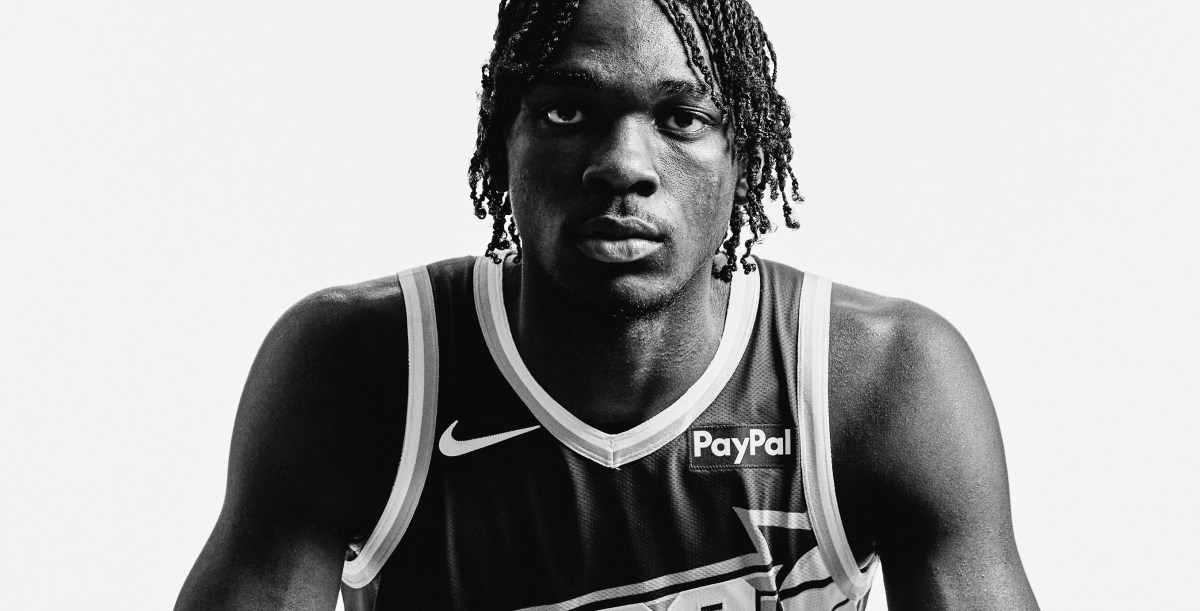Rasheer Fleming is the kind of prospect who makes scouts lean forward in their chair. Long, fluid, and comfortable guarding in space, the 6’9” forward doesn’t just check boxes; he sketches out the blueprint for what an NBA wing-big hybrid looks like in 2025.
Phoenix’s decision to invest in Fleming wasn’t about chasing an instant-impact rookie. It was about betting on traits that translate to the modern game: switchable defense, shooting touch, and an understanding of spacing that lets him float between roles without needing the ball.
Rasheer Fleming stands at the intersection of size, versatility, and high-level effort; a rare package in today’s NBA where two-way wings are worth their weight in talent. At 6’9” with a staggering 7’5” wingspan, Fleming isn’t just built like a prototype; he already embodies what NBA teams are chasing: a combo forward whose presence shifts the floor’s dynamic before he ever receives the ball.
His late-bloomer tag is well-earned. As the NBADraft.net outlook highlighted, he’s a “rapidly emerging combo forward with one of the most improved all-around skill sets in the country … a fast improving, high-energy four or small-ball five … rim protection, rebounding, and effort give him a strong foundation … frame and athletic traits NBA teams look for in a modern big.”
Saint Joseph’s coach watched Fleming grow into a player who impacted every stat, from cuts and rim finishes to catch-and-shoot threes. Yet, his production was strategic, not spectacular. Two-way boards, timely blocks, and the kind of hustle plays that help align second units are where he thrived. His season averages of 14.7 points, 8.5 rebounds, 1.5 blocks, 1.4 steals, and 39% from deep reinforce that all-around profile.
Aran Smith wrote this on Fleming for NBADraft.net:
Fleming projects as a fast improving, high-energy four or small-ball five at the next level. His rim protection, rebounding, and effort give him a strong foundation to build from, and he has the frame and athletic traits NBA teams look for in a modern big.
If Fleming thrives, it won’t just be about him. His development could unlock the kind of lineups that keep Phoenix dangerous deep into a playoff series, where every switch, every possession, and every inch matters.
And if he does, we may look back and see this as the year Phoenix quietly found its modern-era cornerstone. Not with a lottery pick or a blockbuster trade, but with a rookie who understood from day one that success isn’t always loud.
What does success look like for Fleming?
It won’t be in a clear-cut rookie All-Star nod or spectacular outings filling up the scoring column. His value lies in the unseen shifts: stopping the ball, contesting shots without fouling, rebounding to start transitions, and spacing the floor as a low-usage cutter or pop man. His real ceiling is becoming the Suns’ glue. A two-way connector who smooths the team’s imperfections.
However, a few highlights like this for good measure wouldn’t go astray.
Picture this: a rotation lineup where the main scorers take shifts off, and Fleming slides in to guard mismatches, anchor weak spots, and turn loose possessions into something structured. That kind of subtle control can lift a team incrementally across 82 games.
He isn’t here to replace anyone, but if he embraces that glue role, he just might shape how the Suns operate as a whole. And that is a type of success that doesn’t always crack the box score, but it changes the game.
What does success for Fleming this season look like from your point of view?
Listen to the latest podcast episode of the Suns JAM Session Podcast below.
Stay up to date on every episode, subscribe to the pod on Apple, Spotify, YouTube, YouTube Podcasts, Amazon Music, Podbean, Castbox.
Please subscribe, rate, and review
